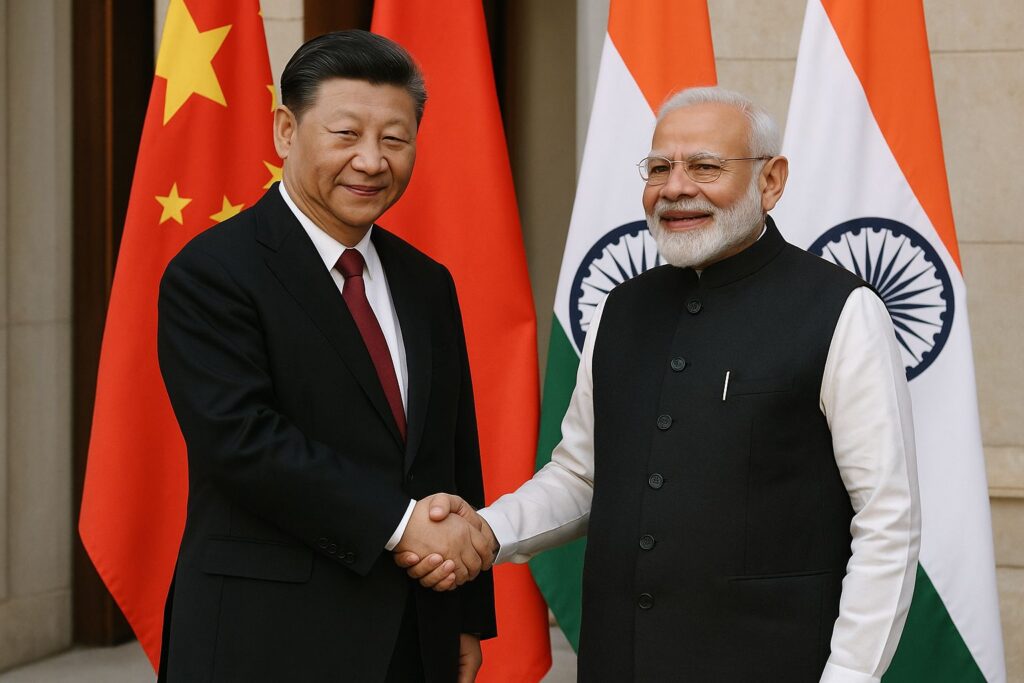
In a point of interest discretionary advancement, Chinese President Xi Jinping and Indian Prime Serve Narendra Modi vowed to reset relations between Asia’s two most crowded countries. Amid a high-profile peace summit, the two pioneers emphasized their commitment to collaboration instep of competition, signaling a move in the tone of their respective relations. This promise of being “partners, not rivals” has the potential to reshape the territorial adjust of control, exchange flow, and security cooperation.
A Memorable Peace Summit
The assembly, named by investigators as one of the most vital political engagements of the year, was centered on tending to the longstanding pressures between China and India. For a long time, border debate, exchange awkward nature, and geopolitical contention have characterized their relationship. In any case, both countries recognize that the current worldwide landscape—marked by financial instability, climate alter, and moving alliances—requires participation or maybe than conflict.
Chinese President Xi Jinping and Modi highlighted that Asia’s success pivots on their capacity to discover common ground. The peace summit laid out systems for expanded discourse, more grounded exchange joins, and joint activities in climate alter, advanced advancement, and territorial security.
Why This Promise Matters
China and India are not as it were topographical neighbors but moreover two of the world’s fastest-growing economies. Combined, they speak to about 3 billion individuals and noteworthy impact over worldwide markets. By choosing to act as “partners, not rivals,” they send a capable message to the world that collaboration can overcome indeed the hardest political differences.
The peace summit served as a stage to recognize challenges whereas centering on openings. The pioneers concurred to prioritize exchange assistance, cross-border network, and participation in renewable vitality. These measures point to decrease contact and cultivate economical growth.
Trade and Financial Cooperation
For a long time, exchange between the two nations has been significant, however imbalanced. China sends out more merchandise to India than it imports, making pressures in financial relations. At the summit, both sides swore to work toward narrowing this exchange hole. Unused assentions on innovation exchange, speculation in fabricating, and facilitating of taxes are anticipated to make strides the situation.
In expansion, China and India talked about the potential of making extraordinary financial passages that would permit smoother exchange streams. Such participation seem advantage businesses extending from pharmaceuticals to hardware, assist extending financial interdependence.
Security and Border Issues
One of the most disagreeable angles of China-India relations has been their shared border debate, especially in Ladakh and Arunachal Pradesh. Whereas the summit did not resolve these issues totally, it set up a modern commitment to discourse and serene strife determination. Both pioneers concurred to reinforce military communication channels to dodge inadvertent escalations and to center on building common trust.
By making security participation portion of the discussion, Chinese President Xi Jinping and Modi illustrated that peace and steadiness are central to their shared vision.
Technology and Climate Alter Initiatives
The peace summit moreover tended to worldwide challenges where both nations have critical stakes. Innovation risen as a key region of participation, with talks around counterfeit insights, 5G advancement, and space investigation. Both China and India point to position themselves as worldwide pioneers in advancement, and association seem quicken advance in these fields.
Climate alter was another central topic. As two of the biggest carbon emitters, both countries recognized their obligation in handling worldwide warming. Commitments were made to collaborate on renewable vitality, green innovation, and economical framework ventures. This participation might too open modern speculation openings in clean energy.
Geopolitical Implications
The choice by China and India to vow organization or maybe than competition carries weight past Asia. It impacts territorial organizations such as BRICS, the Shanghai Cooperation Organization, and the G20. Their solidarity may too balance Western unions, advertising an elective demonstrate of participation established in Asian values and priorities.
Furthermore, the promise can ease pressures in South Asia. Countries like Nepal, Bhutan, and Bangladesh regularly discover themselves caught in the center of China-India competition. A more steady relationship between the two mammoths seem bring more extensive benefits to the region.
Challenges Ahead
Despite the good faith, challenges stay. Deep-rooted doubt, contrasts in outside arrangement, and key competition cannot be settled overnight. India’s developing closeness with the Joined together States and China’s solid organization with Pakistan are delicate issues that may test this modern pledge.
However, both pioneers concurred that proceeded exchange is basic. The peace summit concluded with the understanding that contrasts must not crash participation, and that common regard will direct future interactions.
Looking Forward
This vow marks a turning point in China-India relations. By choosing discourse over encounter, Chinese President Xi Jinping and Modi illustrated that worldwide powers can seek after serene coexistence whereas progressing national interface. The victory of this association will depend on reliable follow-through and honest to goodness commitment from both sides.
If actualized viably, this vow seem clear the way for more grounded exchange ties, innovative headway, and territorial soundness. More imperatively, it signals to the world that indeed chronicled rivals can change into valuable accomplices when confronted with shared challenges.
Conclusion
The peace summit between China and India is not fair a political gesture—it is a vital realignment with worldwide suggestions. Whereas challenges stay, the vow to be “partners, not rivals” might shape the future of Asia and rethink worldwide relations.
As the world observes closely, the coming months will decide whether this commitment interprets into substantial comes about. For presently, the message is clear: participation, not competition, will drive the following chapter of China-India relations.

